| Louis Dufay
produced photographic plates with a
micro-colour-screen between 1910 and 1917.
They were known as the Dufay 'Dioptrechrome
Plate'. From 1925 a large number of patents
were granted for various aspects of the
Spicer-Dufay Process.
The films have the reseau mechanically printed
on the base of the film. The film has to
be exposed through the base. The method of
printing the reseau on the film base can be
seen in the illustration from the
Dufaycolor Book above.
First films were B/W reversal. The
invention by Dr D A Spencer of Kodak Ltd in 1936
of the 'depth developer' made the
negative/positive process possible. This
restricted the development to the layer of
emulsion next to the reseau on the base.
This prevented spread of the image which caused
desaturation of the colours.
In addition the negative reseau had red lines
at an angle of 27 degrees to the edge of film
and 45 degrees in the positive film to prevent
moire fringes when printing. There was
however, desaturation of the colours caused by
overlapping of the colour lines. (Glafcides -
Photographic Chemistry page 552)
  
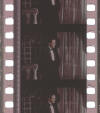
Dufaycolor Print with an enlargement to
see the reseau. Note the clear edges to
the film showing that it is not a reversal print
like the 35mm below.A Dufaycolor negative and a
Dufaycolor print with visatone track

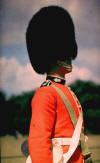

These pictures come from slides made by Jack
Coote for his lectures to photographic clubs
etc. Also the first page of his lecture notes.
They were rescued from a rubbish dump by Charles
Fairall Video Preservation and
Engineering Manager at the NFTVA, Berkhamsted.
|
Dufaycolor
Some Chronology:
1931 First satisfactory films exhibited in
England (copying was a problem)
1932 Spicer-Dufay Ltd incorporated
1933 Name change to Dufaycolor Ltd.
1934 Ilford Ltd acquire the British Empire
rights.16mm film on the market for amateurs.
Sequence in 'Radio Parade' shot (see frames
below) Claude Friese-Green was the cameraman.
Shot on reversal with reversal prints.
1935 British Movietone News shot Jubilee
processions on Dufaycolor
1936 Coronation film shot by Pathe Pictures Ltd
using Dufay Negative/positive system
1937 Dufay-Chromex Ltd formed from the
interests of Spicers, Ilford and Cinecolor
Process (not the American Cinecolor).
Processing Laboratory established in Thames
Ditton. special printing machines were
made by Vinten, Lawley and Debrie.
1938 Improved reseau (the three colour screen)
This information comes from 'Colour
Cinematography' by Adrian Cornwell-Clyne
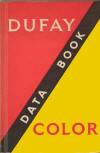 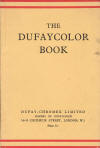
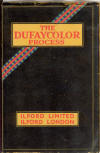
These are three Dufay publications. I
have PDF files available for purchase.
Dufaytissue
Prints could be made from still images using
Dufaytissue. Separation negatives had to
be made from the transparency and then printed
onto Dufaytissue. Here is the section from
'The Dufaycolor Book'

|
Dufaychrome
Formally British Tricolour.
A private company sponsored the development of
the patents of Jack Coote. See JSMPTE June
1948 for a description of Jack's beam-splitter
camera, similar to the Technicolor camera.
Cornwell-Clyne says on page 32 of 'Colour
Cinematography':
The print process used a
two layer emulsion containing non-diffusing
colour couplers and subsequently re-sensitised
for the third colour.
However on page 414 he says:
The blue record negative
is printed onto a positive (non-colour
sensitized) emulsion layer containing an
immobile yellow colour former. The latent
image formed by the first printing operation
is not immediately developed, but, instead,
the film is re-sensitized with positive
emulsion - this time containing an immobile
magenta coupler.... the film is again
sensitized with a positive emulsion - this
time containing an immobile cyan coupler.
The rights were acquired by Dufay-Chromex Ltd
in 1948
|
.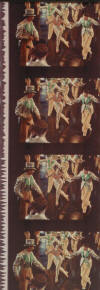
'Radio
Parade' 1934
Directed by Arthur Woods
Cameraman Claude Friese-Green
British International Pictures
Ltd.
Colour sequences shot on Dufaycolor
|
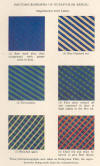
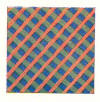
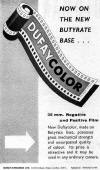
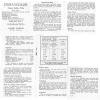 Leaflet
from inside 16mm box of Dufaycolor
Leaflet
from inside 16mm box of Dufaycolor